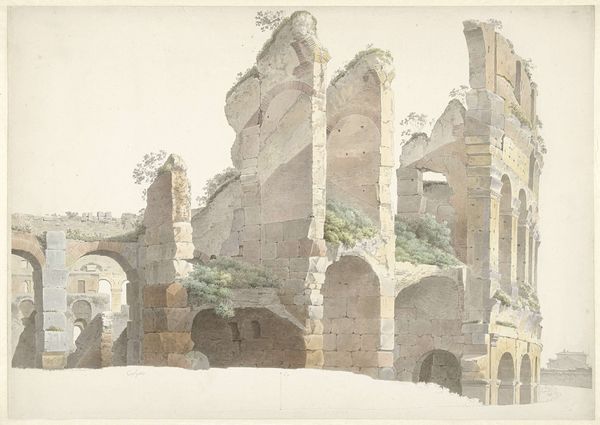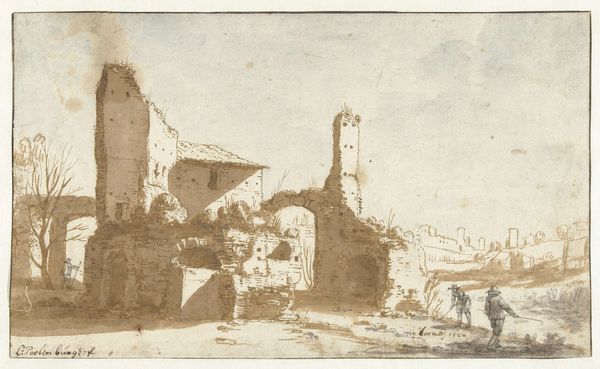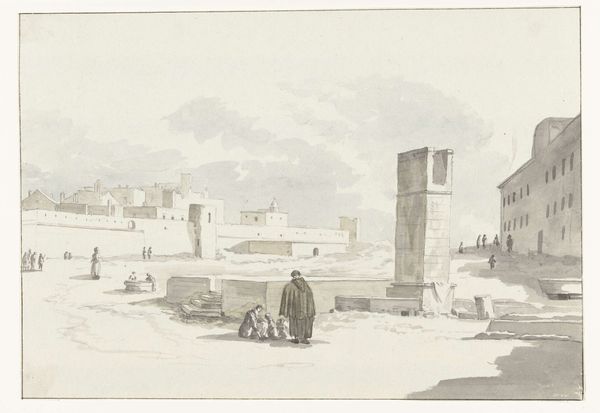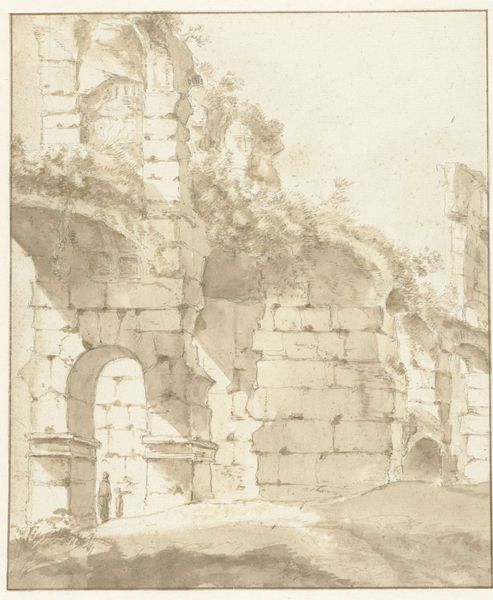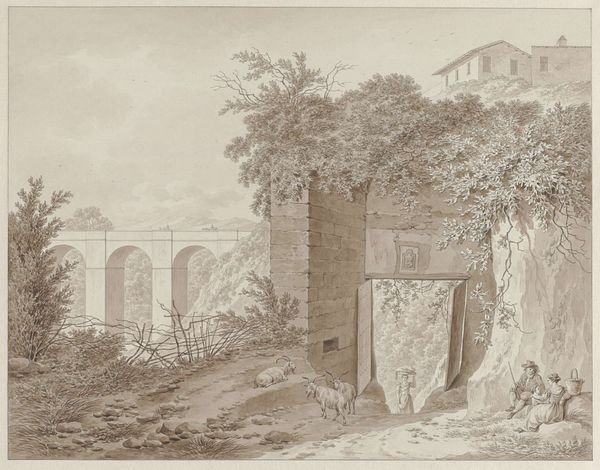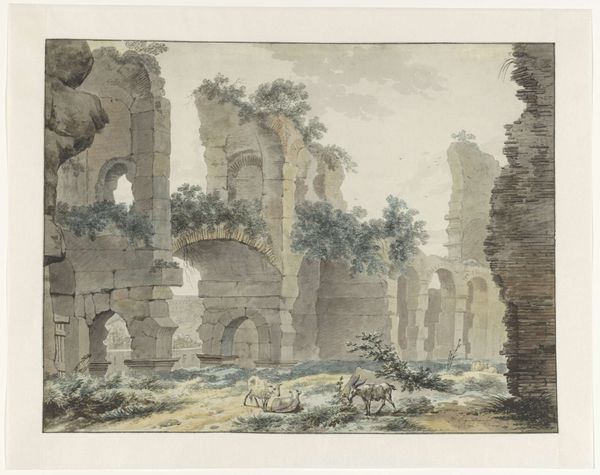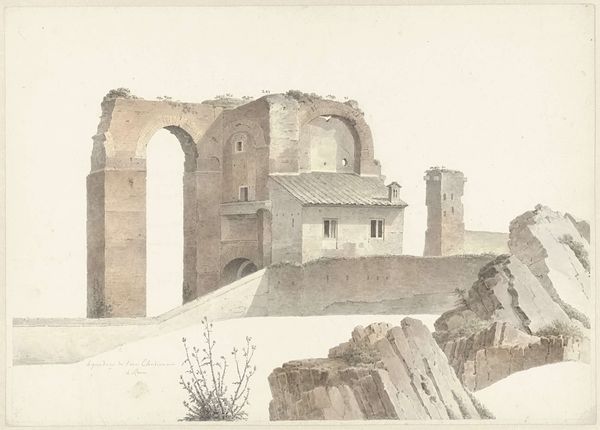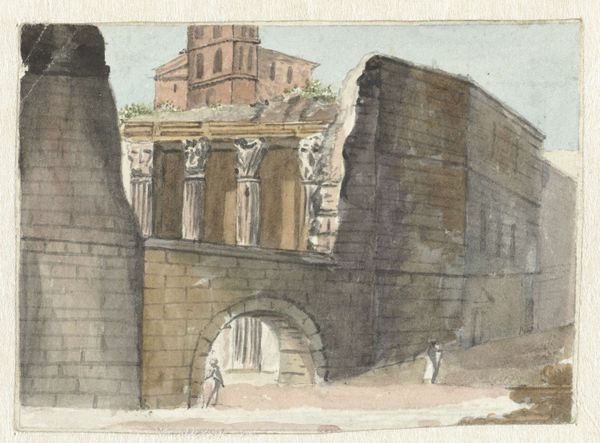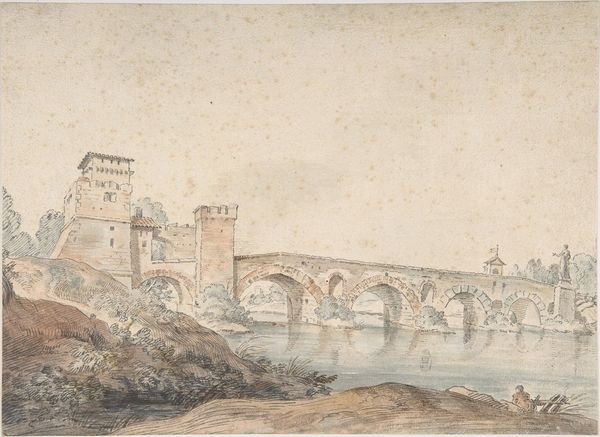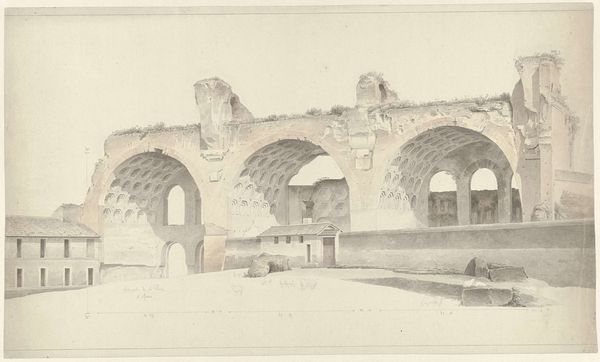
drawing, painting, watercolor, pencil, architecture
#
drawing
#
neoclacissism
#
painting
#
landscape
#
watercolor
#
geometric
#
pencil
#
architectural drawing
#
cityscape
#
watercolor
#
architecture
#
realism
Dimensions: height 367 mm, width 525 mm
Copyright: Rijks Museum: Open Domain
Curator: We are looking at "View of the Aqueduct and the City of Taranto" by Louis Ducros, created in 1778. The work employs watercolor, pencil, and drawing techniques to render a cityscape nestled within a serene landscape. Editor: Oh, instantly, it's that gorgeous sense of decay I love—this weathered aqueduct framing the city feels both monumental and strangely intimate. Like a postcard from a forgotten empire. Curator: Indeed. Ducros meticulously constructs the scene, juxtaposing the robust geometry of the aqueduct with the softer, organic forms of the surrounding foliage. Consider how the structure serves as both subject and frame. Editor: Right! And the light—that muted palette makes the stone seem to breathe, like the whole scene is holding its breath. It's realist, yet there's this dreamlike quality in the washes of color that almost softens the geometric forms that make up the arch and the cityscape in the background. Curator: Absolutely, Ducros uses Neoclassical principles, carefully balancing idealized form with observed detail. This drawing showcases the city’s architecture in the context of its rich historical past—visible both in the aqueduct and the town walls. Editor: It's brilliant. And that contrast works! You've got this tension between nature reclaiming man-made structures with the creeping vines, all set against a meticulously rendered cityscape. It's like time itself is the subject. I'm fascinated. It gives the sense that at any minute, we'll see what happens when an age ends. Curator: Your perspective is certainly valid and perhaps what Louis Ducros wanted his audiences to grapple with when examining this Neoclassical-style piece. Editor: True, and I see it's more than just pretty scenery; Ducros is exploring enduring themes of time, impermanence, and nature's power through these forms, but without the burden of the human subject. Very thoughtful, Ducros. Curator: Yes, a testament to the interplay between history and nature, articulated through artistic mastery. Editor: I completely agree; it's a visual poem etched in stone and watercolor—beautifully unsettling.
Comments
No comments
Be the first to comment and join the conversation on the ultimate creative platform.

